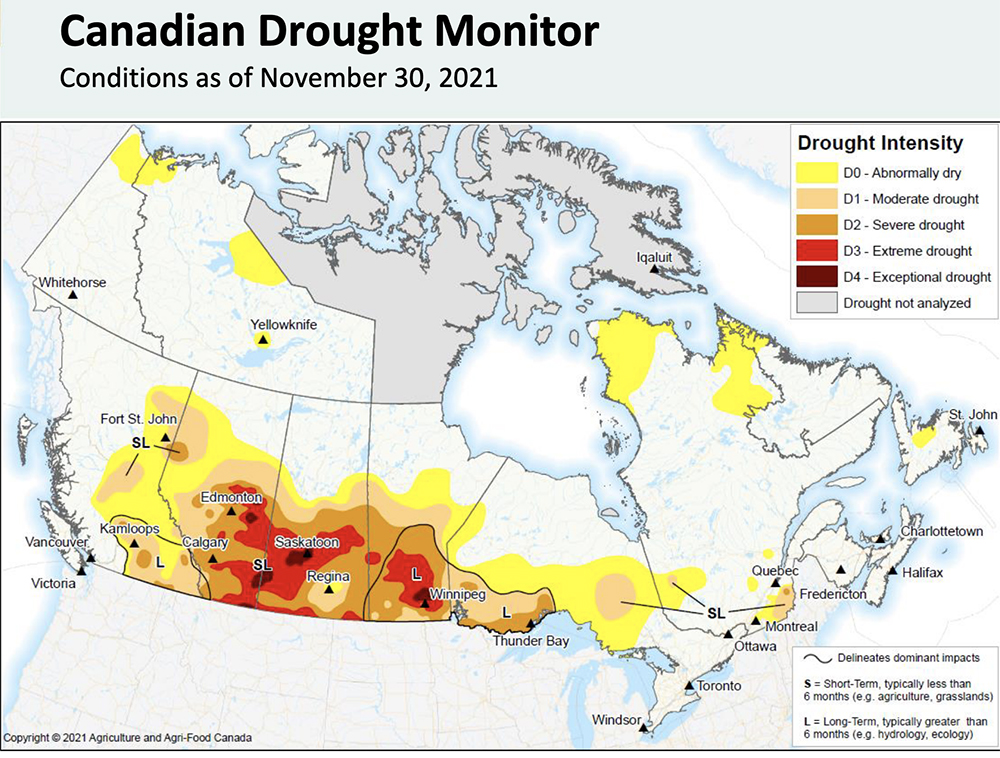Precipitation eases drought worry | The Western Producer

Varied precipitation is maintaining or alleviating drought conditions in some areas of the Prairies, according to the latest drought map from Agriculture Canada’s Canadian Drought Monitor.
The assessment for the period ended Nov. 30 showed few areas of worsening drought on the Prairies with conditions either staying the same or improving in one drought classification compared to October.
Despite the appearance of improving conditions, drought continues to persist.
“At the end of the month, 67 percent of the Prairie Region was classified as being Abnormally Dry (D0) or in Moderate to Exceptional Drought (D1 to D4), including 99 percent of the region’s agricultural landscape,” the assessment read.
Areas that improved by two classifications included parts of central Alberta, central Saskatchewan and central and southeastern Manitoba.
“Northern Alberta and Saskatchewan experienced notable improvements to Abnormally Dry (D0) and Moderate Drought (D1) conditions as a result of significant precipitation, while the southern Prairies saw minimal to no improvement due to a continued lack of moisture and lingering drought conditions (D1 to D4),” the assessment read.
“Modest improvements were made across Manitoba as the province received above normal to very high precipitation over the last 60 days and long-term precipitation deficits began to diminish.”
Dry conditions in Manitoba, which experienced the worst effects of last summer’s drought, were especially improved with only the Interlake and parts of the Parkland region classified as D3 (extreme drought).
An area north of Winnipeg remains in D4 (exceptional drought).
Parts of Manitoba received 115 to 200 percent more than normal precipitation over the past two months.
Areas of northern Saskatchewan improved by one classification, but no change occurred in the southern region. Regina is located within an area classified as D0 (abnormally dry) with surrounding areas in D1.
Much of central Saskatchewan is under D3 with Saskatoon in D4.
While some areas of central Alberta saw improvement, Red Deer and Calgary experienced worsening conditions with Red Deer, Lloydminster and the area south of Calgary in D3. Edmonton, Calgary and Lethbridge fall under D2 while Fort McMurray in the north is under D0.
“In central Alberta, Red Deer recorded its driest 90 days on record, receiving only 13 percent of normal precipitation; this warranted the formation of Extreme Drought (D3) in the area,” the assessment read. “Although eastern Alberta did see minimal improvement to select areas, the near-normal precipitation that fell in November did little to improve long-lasting impacts from the summer months, and thus much of the Extreme Drought (D3) remained relatively unchanged.”
For more content related to drought management visit The Dry Times, where you can find a collection of stories from our family of publications as well as links to external resources to support your decisions through these difficult times.
Source: producer.com


